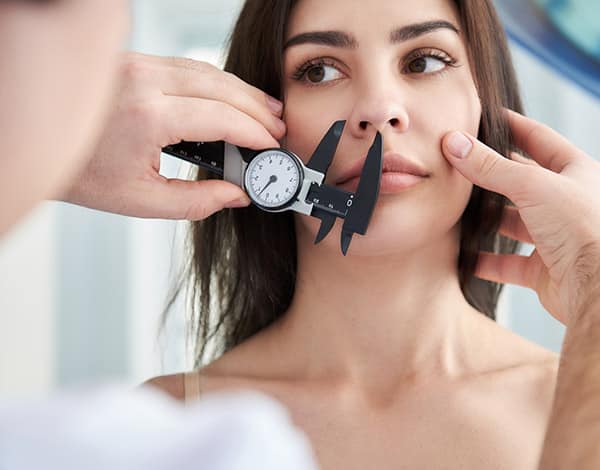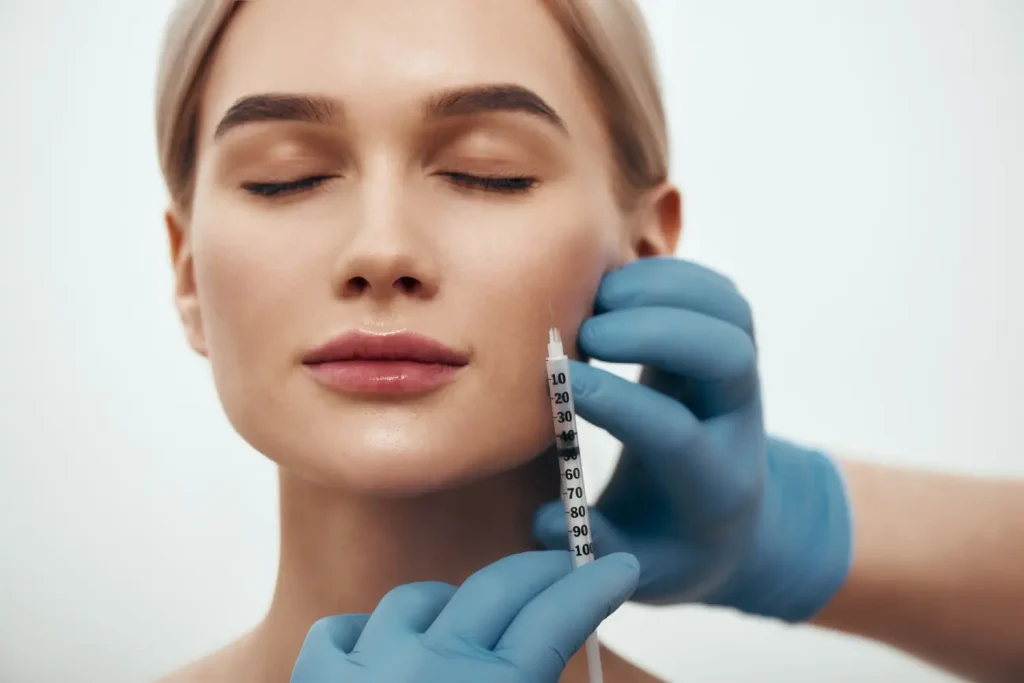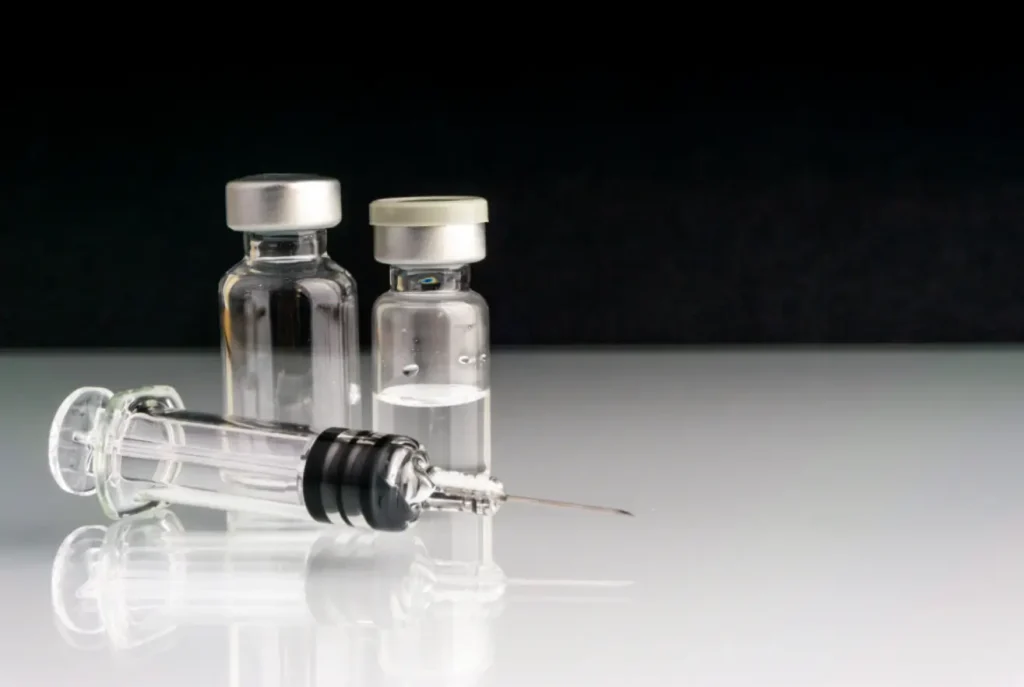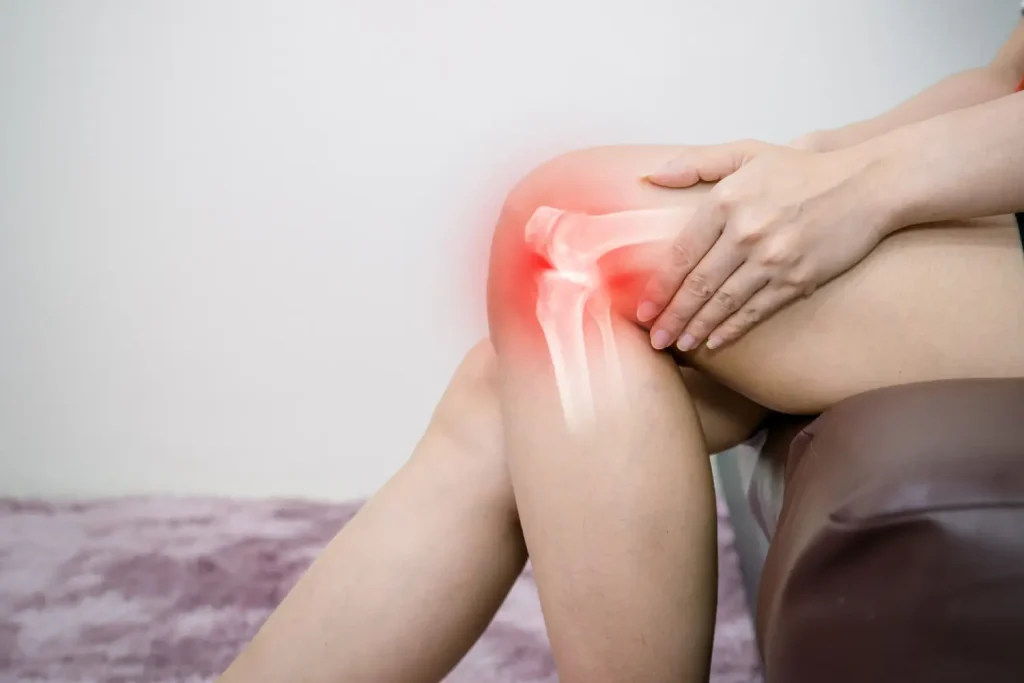Rhinoplasty, or nose shape alteration, is the third most requested aesthetic operation among men and women. This technique is a highly specific and demanding surgical modality that has a risk of complications and undesired results.
Usually, patients who seek for rhinoplasty or nose reshaping have deformities relating to their size or dimensions. These include either excessive or insufficient nasal length, projection of the nasal tip, or radix projection. Reshaping is also done for congenital or acquired abnormalities, such as the ‘ski slope’ appearance of the reduction of the bony dorsum.
Dermal Fillers for Nasal Augmentation
In the past few years, dermal fillers have been found effective in producing similar, if not better results, while reducing the percentage of errors and patient dissatisfaction. Generally, this method is more appropriate for augmenting or adding volume to areas with inadequate dimensions or deficits in the skeletal markup instead of correcting excessive nasal dimensions.
Fillers are often declared as a safe alternative to both primer and revision rhinoplasty. It is efficient in regards of addressing smaller areas without undergoing invasive procedures. However, not all surgical rhinoplasties modulation can be achieved via dermal fillers. Therefore, always discuss with the patient thoroughly to devise the most appropriate treatment plan for them.
Filler Ingredients
Various ingredients have been used and experimented to alter the nose. Among the materials that are not advocated for nose reshaping is permanent graft ingredients like silicone as they are often difficult to manage and cause complications. The rate of extrusion had also proven to be difficult to make it a viable option.
Fat grafting via the Coleman method had shown predictable and good results that can conceal visible abnormalities of the cartilage and bone. It is also a potential device for enlarging the nasal tip with low risk of complications or severe adverse effects. Unfortunately, autologous fat transfer may be costlier due to the longer duration of the fat transfer.
There are two other types of fillers, which are absorbable and non-absorbable. Brands like Artecoll or Aquamid are not regularly used, with a speculation that it is not resorbable in the body. Injectable implants that are absorbable, such as hyaluronic acid or CaHA, have been making waves in the industry for its high rate of success, viability and safety. It is typically used for altering or augmenting the dorsum, redefining the nasal tip, correcting minor defects such as slight asymmetry, saddle nose, retracted columella or pollybeak deformity.
Advantages of Using Dermal Fillers in Nasal Augmentation
There are many advantages of using dermal fillers in nasal augmentation. Some of these advantages revolve beyond the cosmetic changes, but also includes the patient’s comfort and cost treatment.
- Minimally invasive
- Cost effective and cheaper than surgical options
- Minimal downtime
- Can be used for candidates who do not want to take a surgery or have contraindications to general anesthesia
- Can correct and improve acquired and congenital nasal defects
- Can be used concurrently with rhinoplasty surgery
- Safer
- Treatment can be done within 15 to 60 minutes
- Provides immediate results
- Only require topical anesthesia
- Satisfactory and impressive results
Disadvantages of Using Dermal Fillers in Nasal Augmentation
- Impermanent, may degrade after 2-5 years
- Limited or minor applications
- Potential skin thinning or necrosis
- Cannot correct major nasal functional abnormalities
- Can only be used for nasal extension but not for nasal reduction
Nasal Aesthetics
It is difficult to ignore the nose structure as it is the most prominent facial feature that defines a person’s profile. To create an optimal map for the augmentation, perform a three-dimensional assessment that involves the frontal, profile and caudal view of the nasal osteo-cartilaginous skeleton as the main branch of the nasal appearance.
There are also other structures that are associated with the nasal appearance, including the teeth arrangement or the chin projection. This can affect the facial symmetry and may demand a more inquisitive approach in correction the nasal dorsal balance. Some of these structures are:
- Chin projection: An undefined or underprojected chin that amplifies the visual appearance of the nose.
- Lips and philtrum contour: The nasolabial angle is more defined when associated with fuller lips and more prominent philtrum.
- Nasal skin: A thin-skinned nose can provide a better definition. A thick skin nasal skin, however, may be more accommodating to potential errors such as injection techniques or overcorrection. It can also resist emergence of lumps that are caused by the filler injection.
- Subnasale: The intersection between the nasal septum and the upper lip. Located at the midsagittal plane of the nose.
- Malar contour: The mid-face area plays a role in defining the nose shape. Facial recontouring or enhancement of the malar volume can reduce the perceived size of the nose.
While all the information may be daunting to a new, inexperienced injector, there are some rules and knowledge that they can familiarize with. An in-depth knowledge on the nasal anatomy can help to improve the deduction and mapping process of the nose augmentation.
Nasal Anatomy
The shape of the nose is supported and created by the bone and hyaline cartilage. The bones that make up the skeleton of the nose are nasal bones, the frontal maxillae processes and the nasal part of the frontal bone, and nasal spine.
There are 5 main cartilages that form and hold the shape of the nose together, which are two lateral cartilages, two lower lateral or greater alar cartilages, and a septal cartilage. Periosteum covers the bony part of the cartilage and is connected to the perichondrium.
The artery is an important vulnerable structure that needs to be avoided from any injection. The angular branch (A) of the facial artery connects to the nasolabial fold, in which it branches off into the superior labial artery (SL). The vein runs alongside the angular artery and heads towards the medial canthus. For the nasal ala, it is fed by the alar branch of the terminal branch of the angular artery. This bleeding is also connected to the dorsal branch of the supratrochlear artery within the nasal tip.
Other areas that are important to the nasal anatomy are:
- Glabella: The slightly reduced area located in between the supercilliary arches. The intersection of the frontonasal and internasal sutures is the nasion.
- Nasal Root or Radix is located on the midline nasal dorsum. It is on the same level as the supratarsal folds. If the supratarsal folds are not prominent, then measure the root of the nose 6mm above the inner canthus.
- Nasal tip is the dome-projecting points located at the lower lateral cartilages.
Injection Techniques
There are various forms of techniques that can be applied to correct the nose. Usually, the dermal fillers used are with larger concentrations or particles, such as Juvederm Ultra 4 or VOLUMA, or CaHA particles like Radiesse.
Juvederm VOLUMA is applicable for larger volumes that are required for lifting or westernizing the depressed bridge found in an Asian nose. Calculate the ideal degree of augmentation that is realistically achievable. Use a 27G x 0.5 inch (0.4x13mm) sterile hypodermic needle and deposit an average of 0.2-0.5mL of the injectable into the nasion and over the bridge of the nose. The same size needle can be used for injecting the nasal dorsum and the tip. Using a linear threading technique, slowly deposit 0.1-0.2ml per injection in a caudally manner to connect the glabella to the supratip in a straight manner. Do not overcorrect and administer enough filler to achieve the desired dorsal definition.
If there is an increased in the dorsum’s height, it will cause a decrease on the nasofacial angle. As a result, the nasal tip projection is also decreased. Therefore, every nose reshaping session needs to consider refining the tip.
Dermal fillers are not just useful for that purpose, they are helpful in adjusting significantly visible issues with nasal symmetry, such as nasal bone deformity or an abnormal septum. This type of deformity could be a result of previously performed surgical rhinoplasties. Some of the above mentioned deformities include deviated septum, a C-shaped nasal dorsum, as well as a swollen, bulbous tip. A 0.7mL concentraion Juvederm Ultra 4 injection at the dorsum region, followed by another 0.3mL for tip redefinition, can reproduce the visual appearance of straighter and more prominent defined dorsum with the typical slightly projected tip.
In fear of pain during the procedure, use topical anesthesia such as applying cold packs on the injection site. Not only it provides immediate pain relief, it also minimizes any potential swelling or bleeding via vasoconstriction.
Resculpturing the Nasal Tip
The nasal tip is the most important component of the nose. The lateral view of the tip impacts the inclination, length, refinement and width of the facial structure. By changing the contour of the tip, the nasal length and the dorsal height will have a subtle, if not drastic, change.
Nonsurgical procedure is only applicable for increasing the tip projection. Other indications, such as volume reduction, interdomal distance reduction, cranial rotation and decreasing the tip projection may require an extensive surgery in an operation room.
As stated before, a sound knowledge of the anatomy, especially the blood supply, is highly influential to the results of the procedure. This is due to the connection between the superior labial artery to the nostril sill and the columella base. Another substantial branch, the columellar artery, ascends to the superficial area of the medial crura.
Hyaluronic acid fillers like Belotero can produce impressive results when it comes to adding the contours of the nasal tip. It can be a good alternative to:
- A columellar graft that reinforces the medial crus.
- A spreader graft that restores the vault support between the septum and the upper lateral cartilage.
- A tip graft for correcting the proportion between the nasal tip and the nostril. This can avoid any potential complications that may arise with general anesthesia and nasal tip surgery.
Nasal Tip Technique
For hyaluronic acid filler, insert the needle through the columella and the caudal view of the septal cartilage. It should be approximately 3-5mm below the tip points, closer to the infratip break. Inject 0.2-0.3ml boluses in between and over the domes while avoiding the columellar arteries. This dome is the area formed between the middle and lateral crura of the greater alar cartilage.
The ideal projected nasal tip should have a triangular shape that accommodates its superior apex at least 2mm above the dorsum. The fillers are injected in order to replicate this projection. Fortunately, the dome area is a safe site for the injection due to the absence of arteries other than minor anastomoses.
After the injection, insert an external nasal splint made of lightweight aluminium for at least 24 hours. This can help mold the nose to a designated shape. This nasal splint is also customizable and can be trimmed to fit the nose’s size. However, the structure becomes rigid once it is administered. For 24 hours, the splint can resist any trauma as well as resist any excessive swelling in the soft tissue. This complication may cause filler migration, which can influence the form of the desired shape and size.
A nonsurgical nose enhancement can be complemented with a few BTX-A injections, with 2 units per side in the alaeque nasi for the bunny lines, in the nasalis and levator alae nasi for nostrils flaring, and depressor septi nasi for the downward tip.
Summary
With its high rate of success, quick and its approved safety, nonsurgical nose reshaping has become a desired alternative to surgical rhinoplasty. The resorbable, biocompatible and easily malleable injectables can help to form the desired shape with lower risk of disappointment. For the injector, a highly detailed 3-dimensional inspection of the nose can help achieve the goals of the treatment.
References
Foutsizoglou S and Leontsinis T. Augmentation Rhinoplasty: A Unique technique using autograft rib shavings enveloped in bovine pericardium for a more natural and predictable result. Body Language Journal. Issue 46; p. 60-62. 2011
Brown DL. Borschel GH. Michigan Manual of Plastic Surgery. Lippincott Williams & Wilkins, 2004.
Aesthetics Journal, “Non-Surgical Nose Reshaping”. https://aestheticsjournal.com/feature/non-surgical-nose-reshaping





















